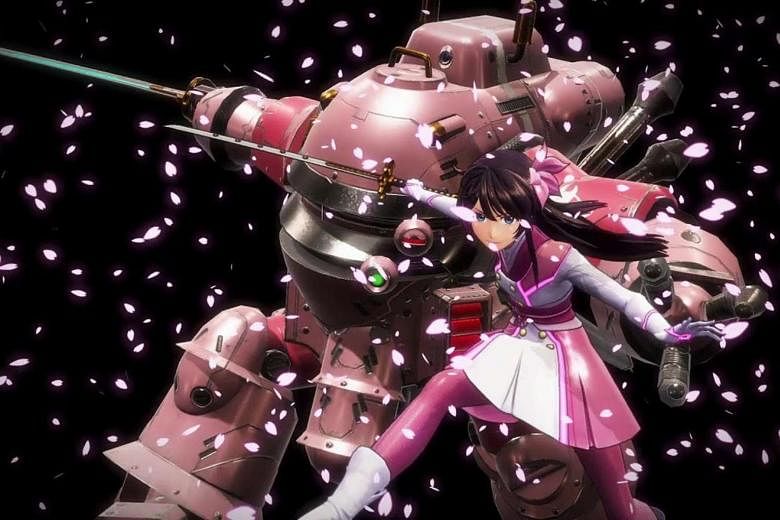In 2016, Japanese video game fans were asked by developer Sega which game franchise they would most like to see a revival of.
Sakura Wars, a series that revolves around giant demon-killing robots and their pilots, received the most votes.
The franchise had lain dormant since 2005, but the fan vote appears to have swayed some minds in management, culminating in the release of New Sakura Wars - the sixth game in the series - in December last year.
I had never heard of Sakura Wars before receiving my review copy, for good reason: only one of the previous five games was released outside of Japan.
New Sakura Wars is expected to be released in North America and Europe only later this year, which means there is no English version available now.
I was able to scrape by with Japanese audio and Traditional Chinese subtitles, but gamers in Singapore should take stock of their Mandarin proficiency and decide if the game is worth the hassle.
Language barrier aside, New Sakura Wars is also an unconventional hybrid of the action role-playing game, visual novel and dating simulation genres.
This will take some getting used to.
The player takes on the role of Imperial Japanese Navy captain Seijuro Kamamiya in an alternate 1940 when steam power is king.
Leading the line for their respective countries in this conflict are the pilots of steam-powered robots known as Koubu.
Kamiyama is tasked with returning the Tokyo Flower Division of Koubu pilots to its former glory.
In contrast with Western open-world role-playing games, the plot of New Sakura Wars unfolds in largely linear fashion, with most of Kamiyama's time is spent talking to various characters to advance the plot.
In this respect, the game is similar to an interactive movie, which is fortunate as it is a very pretty movie indeed.
The main characters were designed by manga artist Tite Kubo, known for his vivid character designs in his wildly successful manga series Bleach.
An anime adaptation is in the works, and the game benefits from this with multiple animated cutscenes that add polish.
New Sakura Wars also attempts to attract a new generation of gamers by including real-time battle sequences for the first time.
This is a mixed bag for me. Pilots in the Division have their own exaggerated, campy super move which I greatly enjoyed triggering in combat.
Unwieldy robot controls unfortunately put a bit of a dampener on these occasions, as too often I ended up completely missing the mark and slashing air.
But New Sakura Wars is also part-dating simulation, a distinctly Japanese genre.
Except for Kamiyama, all the Tokyo Division pilots are female.
This is a trope with sexualised undertones that is simultaneously familiar to most anime and manga fans, and awkward to explain to the uninitiated.
In speaking with the other characters, Kamiyama is regularly given dialogue choices which when selected can improve or worsen the relationship.
As the relationship progresses, the interactions become increasingly "datey", as if Kamiyama knows no other mode of relating to girls, and the girls no other mode of relating to him.
Then there are the outright "date" encounters that are marked by a pink heart on the mini-map, and can be skipped if so desired.
New Sakura Wars hovers in family-friendly territory for the most part, but if the game is aiming to broaden its appeal then the dating simulation elements feel like a misstep.
One telltale sign was the number of moments playing the game on the TV in my living room when the presence of onlookers suddenly became uncomfortable owing to suggestive scenarios.
New Sakura Wars thus occupies an uneasy space between bringing back the niche gameplay that worked before and attracting a new and wider audience.
It has already proved popular in Japan, where more than 160,000 copies have been sold as of Jan 12, but its broader appeal remains a question mark.
High production values help the game stand out, but for me its hybrid strangeness adds up to an experience less than the sum of its parts.
FOR
• Strong character design
• Reasonably absorbing storyline
AGAINST
• Mash-up of niche genres could turn off some
• No English version for now
SPECS
PRICE: From $79.90 ( PS4 only)
GENRE: Action role-playing game and visual novel
RATING: 7/10


